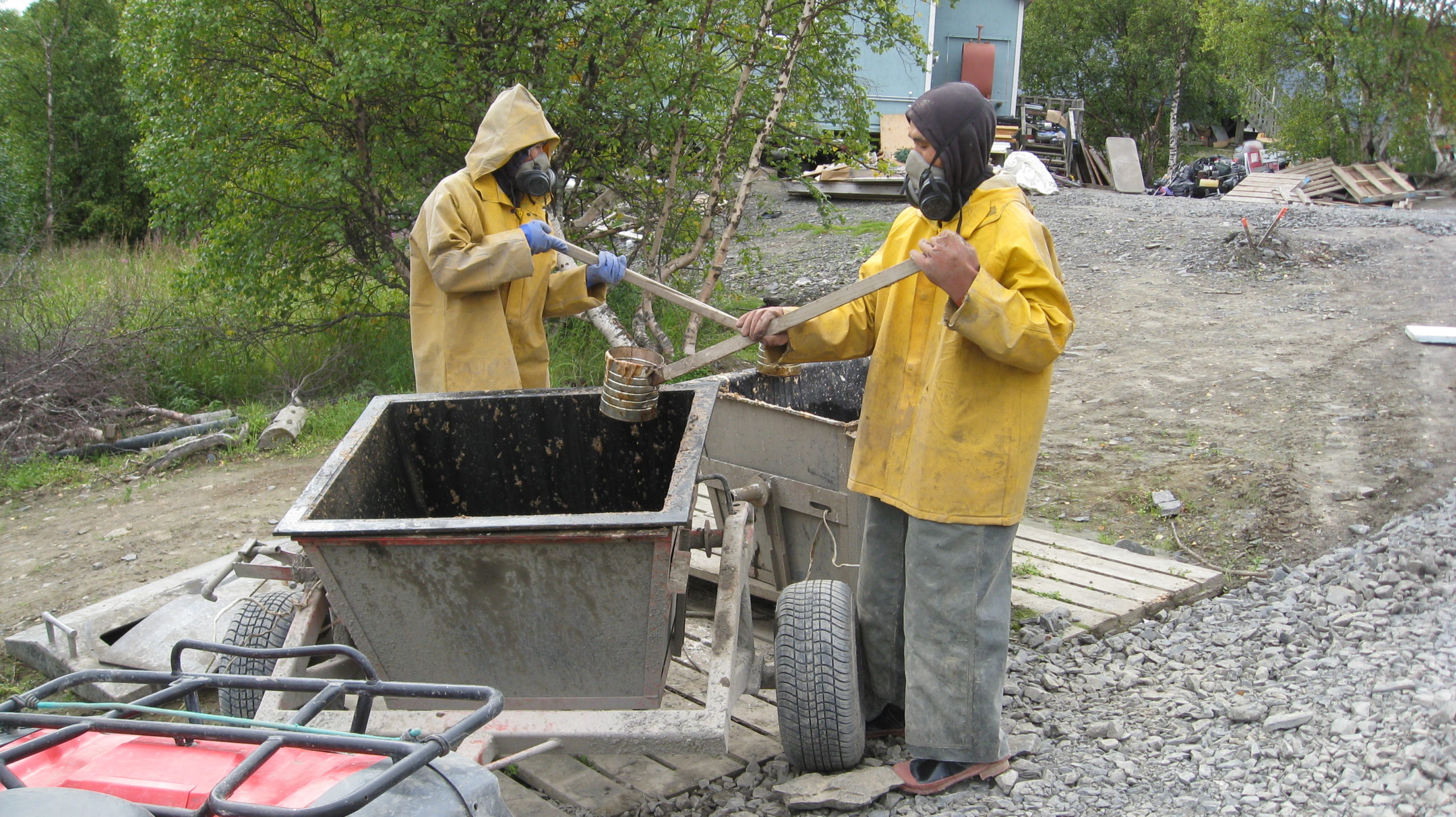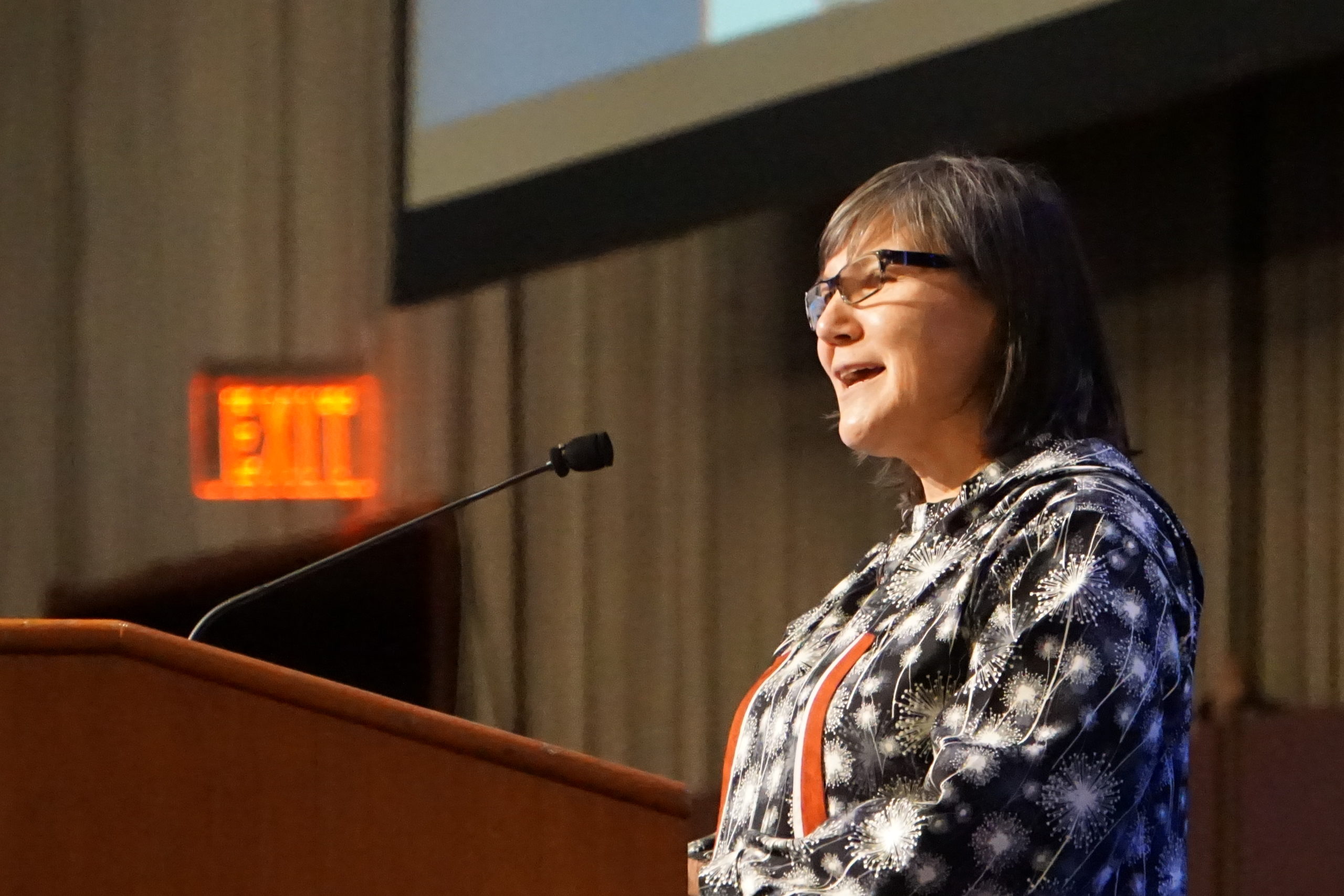How COVID is helping spur big investment in Alaska water and sanitation services
The bipartisan infrastructure bill that passed the U.S. Senate includes $3.5 billion for water and sanitation, some of which will go to rural Alaska villages.

After a hard winter with a heavy COVID-19 toll in rural Alaska, health officials called for sweeping action to bring water and sanitation services to predominantly Native villages that have long lacked them.
Nationally, $3.3 billion is needed to bring water and sanitation capabilities up to par right now — and nearly $2 billion of that in Alaska, said Valerie Nurr’araaluk Davidson, president of Alaska Native Tribal Health Consortium, at a hearing of the U.S. Senate Committee on Indian Affairs this spring.
The health consequences are dire, she said.
“We hear repeatedly during the pandemic that you can prevent COVID-19 by washing your hands, by cleaning and disinfecting surfaces and avoiding close contact with others. And, unfortunately, you can imagine how heartbreaking it is to be in a rural community in Alaska where you don’t have running water and you hear constantly that washing your hands and disinfecting is really critical,” Davidson said during the hearing.
Now the federal government is on the verge of delivering.
The bipartisan infrastructure bill that passed the U.S. Senate and now awaits action in the U.S. House includes $3.5 billion for Indian Health Service sanitation facilities and services — more than meeting what Davidson listed as the immediate need.
“This is going to really be a once-in-a-lifetime investment in sanitation infrastructure,” Sen. Lisa Murkowski, the Alaska Republican who was a key team member crafting the bill, told reporters in July, just before the bill came to a vote in the Senate.

The lack of adequate health-related infrastructure is a longstanding problem in rural Alaska, where 32 communities are totally unserved and 22 percent of rural Alaska households lack in-home plumbing.
And the health consequences of inadequate water and sanitation have long been understood. There are well-documented higher rates of respiratory, skin and gastrointestinal diseases in rural Alaska and in other regions like Arctic Canada.
The COVID-19 pandemic continued the pattern of disproportionate impacts. Through June of 2021, Alaska Natives accounted for 33 percent of Alaska’s COVID-19 deaths and 26 percent of the hospitalizations, despite making up only 16 percent of the state’s population, according to the Alaska Department of Health and Social Services.
[Water and sanitation deficiencies worsened the COVID pandemic in rural Alaska, a study finds]
The current crisis apparently helped prompt the massive funding in the infrastructure bill, along with other shorter-term assistance, including the rapid installation of about 100 portable handwashing stations in underserved villages to address immediate needs.
“I’ve never seen so much momentum to address inadequate access to water or inadequate water and sanitation within the home in such a short period of time. I think it’s really, really amazing and maybe a little sad that it takes a pandemic,” said Laura Eichelberger, an ANTHC epidemiologist.
Unlike the immediate installation of handwashing stations, the benefits of the infrastructure-bill funding will take some time to reach rural Alaska residents, said David Beveridge, an ANTHC environmental health and engineering manager.
The $3.5 billion will be divided among the 12 Indian Health Service regions in the nation and parceled out over five years. There is more work beyond that, Beveridge said.
“You’re still talking about a few years before any faucets can, say, be turned on in certain communities just because of the length of time it takes to do the planning and the designing in a community. They’re very complex systems. And we have to actually get the money first,” he said.
Plenty of money has been spent in the past on water and sanitation upgrades.
From 2008 to 2020, for example, $154 million was spent to bring sanitation services to about 435 homes in four villages in the Yukon-Kuskokwim region of western Alaska, according to ANTHC figures. One more project, to help about 100 homes, is expected to be completed next year. In 2015, more than 4,000 rural Alaska households were completely unserved, according to the U.S. Arctic Research Commission; by last year, that number had been winnowed down to 3,300.
But the progress over the years can seem frustratingly slow, Eichelberger said. The questions often arises, she said: “Why are we still here in the 21st century and we have all these people who still have to haul their own water and dump their own sewage?”
The answer is that the remaining unserved areas are the hardest cases, with economic and logistical obstacles. “The easier less technically challenging communities have been done,” Beveridge said.
Climate change impacts specific to Alaska and other Arctic regions are among the technical challenges.
Permafrost thaw, for example, puts sediment into water that must be filtered out, at increasing costs, Eichelberger said. Coastal erosion and storm surges, the result of sea ice loss, have damaged infrastructure and threaten more, she said. The pending relocation of rapidly eroding villages might make it a hard sell for those sites to win investment dollars, she said.
“Government isn’t going to fund something that is temporary, necessarily,” Eichelberger said. “But what do you do? Do people continue to have to haul their own water and not have enough water in their homes to cover their hygiene needs?”
When money is scarce, as is normally the case, the federal and state agencies that pool resources to pay for water and sanitation upgrades set standards so that competing projects can be prioritized — and each funding agency has its own set of rules and requirements. Those standards, which largely focus on economic wherewithal, are used to calculate priority rankings.
That creates what Beveridge and Eichelberger call a “Catch-22” situation. “It’s hard to demonstrate the ability to operate something when you haven’t been given the opportunity to operate it already,” Beveridge said.
The infrastructure bill, assuming it passes, would provide enough money to make those local and regional economics-related qualifications irrelevant, at least for the next few years Beveridge said.
But the bill, assuming it passes intact, won’t “solve it all,” he said. Money is still needed to cover different services that are related to water and sanitation — things such as schools and community buildings that might have piped water but are not in themselves water and sanitation investments. Those facilities fall outside of the IHS mandate, so there is always a gap when the agency proposes to fund water and sanitation projects, he said. Thanks to the infrastructure bill, “the gap might not be so drastic as it was”
Eichelberger, for one, is optimistic that the COVID-19 crisis will prompt significant progress to help people in rural Alaska.
“I’m pretty hopeful, at least for the water and sanitation piece, that this will be a silver lining to a very bad chapter in our history,” she said.
Support for this reporting came from the Dennis A. Hunt Fund for Health Journalism, a program of the Annenberg Center for Health Journalism at the University of Southern California.